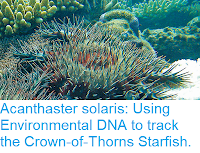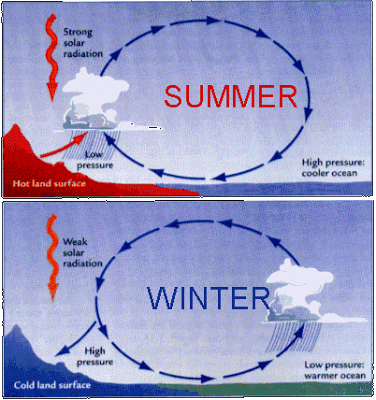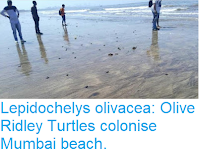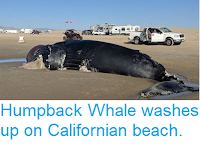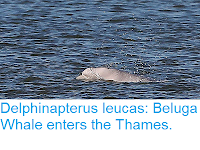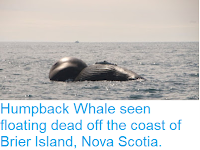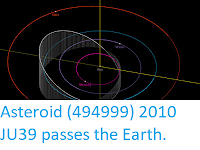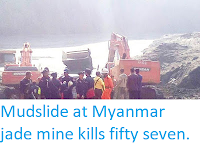The living Echinoderm groups Echinoidea (Sea Urchins) and Holothuroidea (Sea Cucumbers) are united into the larger group Echinozoa, allong with an extinct group, the Ophiocistioidea, which first appeared in the Ordovician and died out in the Triassic. The Ophiocistioids shared some traits seem in modern Echinozoans, such as complex jaw apparatus of the Sea Urchins and the body-wall skeleton mostly reduced to small spicules of the Sea Cucumbers, with traits uniquely their own, most notably a dome-shaped body similar to half the test of a Sea Urchin, with five ambulacra on the outside, radiating out from a mouth at the centre, each of which ends with three enlarged, tentacle-like tube feet. Because of the easily fragmented nature of the skeletons of these Echinoderms, they are only found in deposits with exceptional preservation.
In a paper published in the journal Proceedings of the Royal Society Series B Biological Sciences on 10 April 2019, Imran Rahman of the Oxford University Museum of Natural History, Jeffrey Thompson of the Department of Earth Sciences at the University of Southern California, Derek Briggs of the Department of Geology and Geophysics and Yale Peabody Museum of Natural History at Yale University, David Siveter of the School of Geography, Geology and the Environment, at the University of Leicester, Derek Siveter also of the Oxford University Museum of Natural History, and of the Department of Earth Sciences at the University of Oxford, and Mark Sutton of the Department of Earth Sciences and Engineering at Imperial College London, describe a new species of Ophiocistioid Echinoderm from the Silurian Herefordshire Lagerstätte of England.
The Herefordshire Lagerstätte comprises a large number of small (at most
centimetres) organisms from the Middle Silurian (about 425 million
years ago). The organisms are preserved in three dimensions within
calcareous nodules within a layer of volcaniclastic sediments (i.e. a
volcanic ashfall in a marine environment), many of which can only be accessed
using computerised tomography or similar scanning techniques. Brachioods,
Polychaete Worms, Gastropods, Aplacophorans, Chelicerates,
Marrellomorphs, Mandibulates, Barnacles, Phyllocarids, Ostracods,
Starfish and Sponges have all been found in the Herefordshire
Lagerstätte; together these are known as the Herefordshire Biota.
The new species is placed in the genus Sollasina, and given the specific name cthulhu, in reference to the tentacled monster from the writings of HP Lovecraft. The species is described from thirteen fossils, all preserved three-dimensionally as calcite void-fill in calcareous concretions. One exceptionally well-preserved specimen was selected for detailed study by physical–optical tomography. The specimen was cut into seven pieces, serially ground at 30 μm intervals, and the exposed surfaces were imaged using a Leica digital camera attached to a Wild binocular microscope. The resulting sets of slice images were digitally reconstructed as a three-dimensional (3-D) virtual model using the SPIERS software suite.
Sollasina cthulhu. (a)–(m) Virtual reconstructions (stereo-pairs), (n), (o) specimen in rock. (a) Oral view. (b) Lateral view. (c) Aboral view. (d) Non-peristomial tube foot (unpaired). (e) Non-peristomial tube foot (paired). (f) Peristomial tube feet. (g) Oral view showing the peristome, madreporite and gonopore (peristomial tube feet omitted). (h) Oral view showing the madreporite and gonopore (peristomial tube feet removed). (i) Aboral view showing the periproct. (j) Lateral view showing plating in the interambulacral area containing the madreporite and gonopore (tube feet removed). Interambulacral plates are shown in green. (k) Oral view showing ambulacral plating at the margin of the theca (tube feet removed). (l) Oral view showing the internal ring (all other features transparent). (m) Aboral view showing ambulacral plating at the margin of the theca (tube feet removed). (n) Section through the theca showing the tube feet. (o) Section through the theca showing the internal ring. Abbreviations: cp, circular pore; go, gonopore; ir, internal ring; jp, jaw plates; ma, madreporite; pe, peristome; pr, periproct; pt, peristomial tube feet; st, small adoral non-peristomial tube foot; tf, non-peristomial tube feet; ut, unpaired non-peristomial tube feet. In k and m, perradial plates are shown in purple, adradial plates in red, and interambulacral plates in green. Scale bars: (a)-(c), (l ) 5 mm; (d), (e), (g), (k), (l), (n), (o) 2 mm; (f), (h), (i), (j), (m) 1 mm. Rahman et al. (2019).
Sollasina cthulhu has a theca approximately 15 mm in diameter and pentagonal in outline, with thin, imbricate plates. The oral (lower) surface is slightly concave; the aboral (upper) surface is partly collapsed, but was presumably convex in life. The oral surface of the theca consists of five wide ambulacral areas, composed of columns of perradial and adradial plates, which alternate with five narrow interambulacral areas. The aboral surface of the theca consists of numerous irregularly arranged plates. The peristome occupies the middle of the oral surface. It is subcircular in outline and approximately 6 mm in diameter. Five thick, rhomboidal, interradially positioned plates form the jaw apparatus, which occupies about half the peristome diameter.
In each ambulacral area, the plates are divided into one central column of six alternating perradial plates and two lateral columns of four adradial plates each. There are nine plated tube feet within each ambulacral area. The first pair is located within the peristome, close to the outer edge of the jaw apparatus. These peristomial tube feet are covered in tiny plates and are smaller than the other tube feet, measuring approximately 3 mm in length and 0.8 mm in diameter. The other tube feet are located outside the peristome, occurring as three slightly offset pairs, with an additional solitary tube foot at the aboral end of each ambulacral area. The non-peristomial tube feet increase in size aborally (reaching a maximum of approximately 14 mm in length and 2 mm in diameter), with the exception of the unpaired tube foot which is shorter than its adoral neighbour. Within one of the ambulacral areas, the most adoral of the tube feet outside the peristome is much smaller than all others . The tube feet are preserved hollow. They consist of thin plates arranged in longitudinal rows, overlapping distally. There are at least eight rows of about 20–30 plates each in the paired tube feet and four rows of about 13 plates each in the unpaired ones.
Reconstruction of Sollasina cthulhu. Elissa Martin/Division of Invertebrate Paleontology/Yale Peabody Museum of Natural History in Rahman et al. (2019).
See also...
Follow Sciency Thoughts on Facebook.






